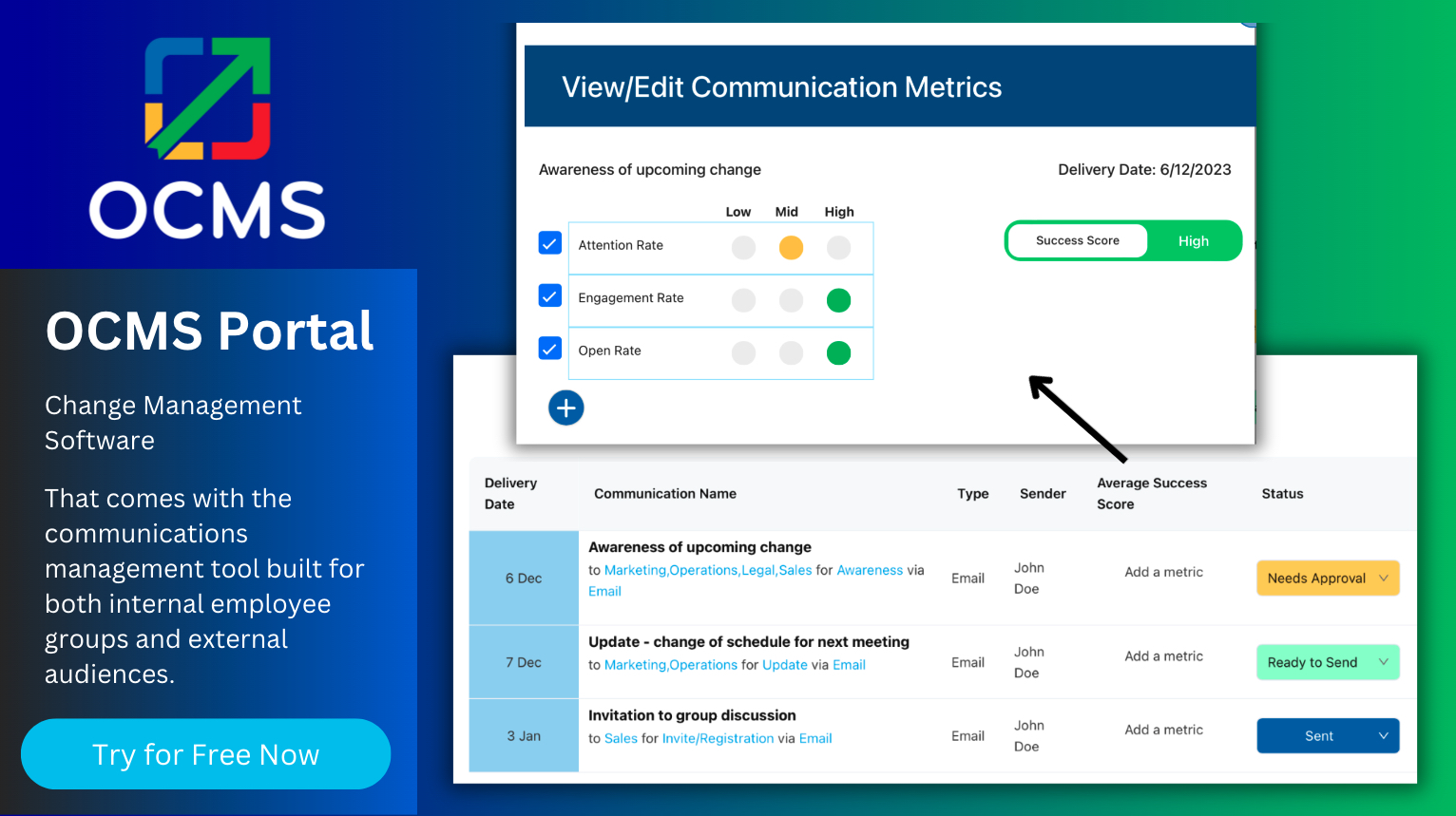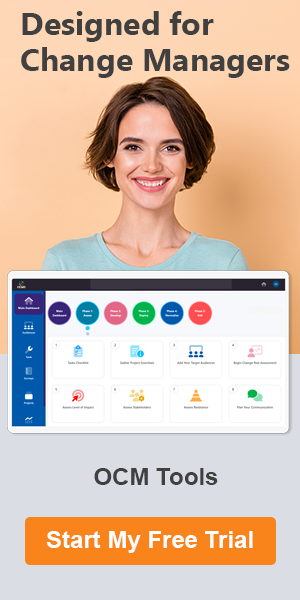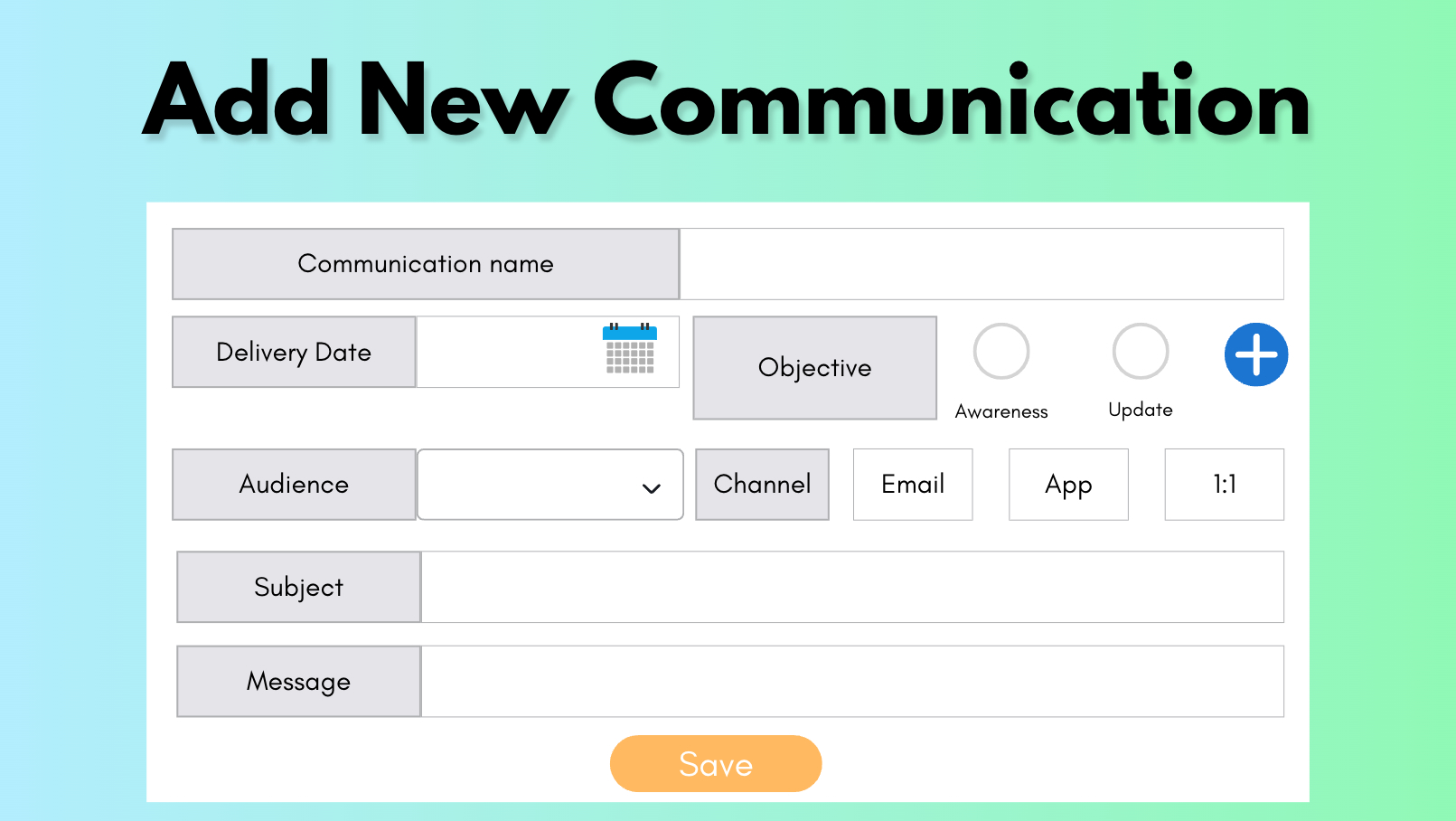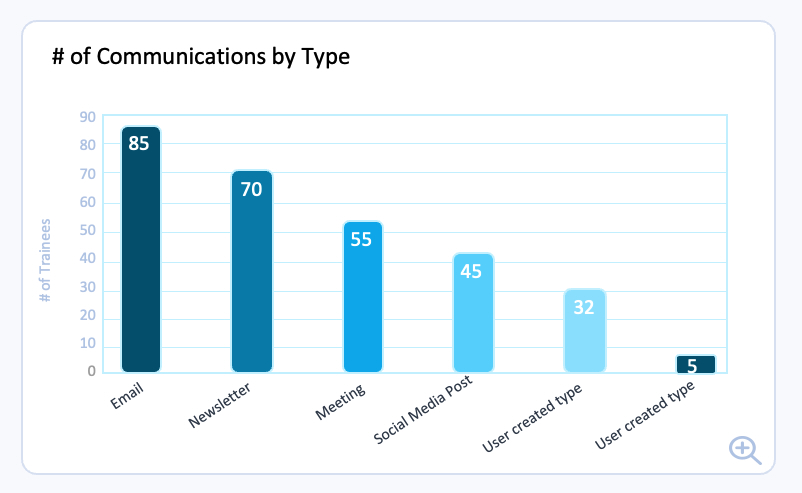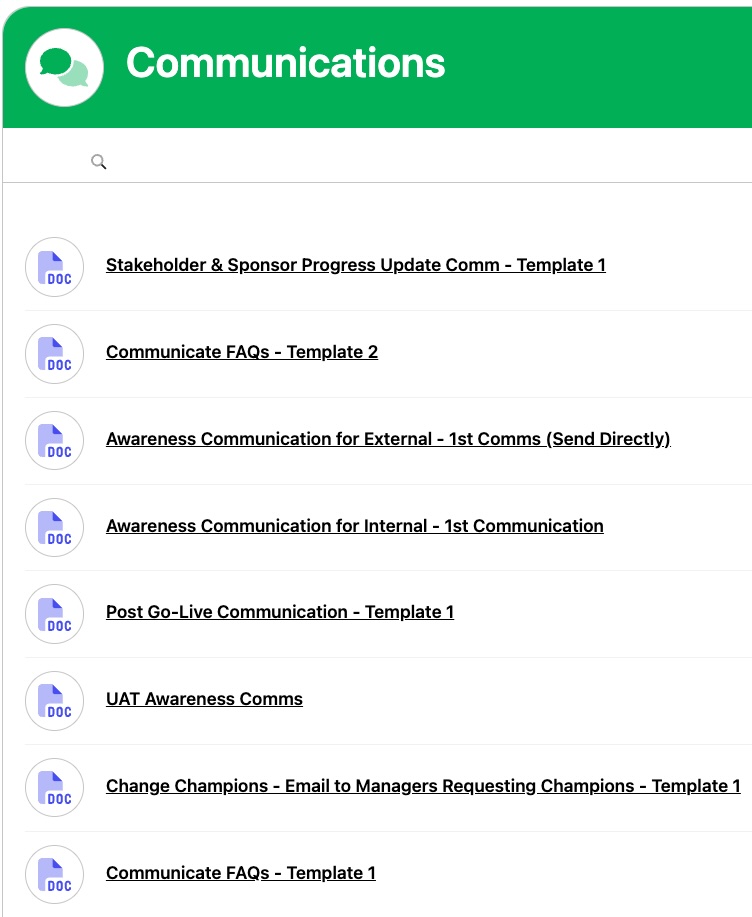Best External Communication Strategies, Tips, and Step-by-Step Plan

Welcome to the exciting world of external communication!
Whether you’re a seasoned professional or just dipping your toes into the waters of effective communication, this guide is your trusty companion on the journey to becoming a skilled external communicator.
In today’s interconnected and fast-paced world, mastering the art of external communication is more critical than ever.
It’s not just about talking to the world; it’s about making sure your message is heard, understood, and, most importantly, has the impact you desire.
This guide is your gateway to understanding the core principles, best practices, and essential tools for crafting and executing effective external communication strategies.
In this guide we’ll walk you through the ins and outs, provide practical tips, and share examples to help you communicate with confidence, creativity, and impact. Enter a realm where businesses, organizations, and individuals interact with the outside world. Enter the world of External Communication.
Are you looking for a brief overview? That’s next up. If you’re enthusiastic about delving into more detailed content, just keep going, and you’ll find more reading materials extending beyond the summary.
Quick Summary
Understanding External Communication
External communication refers to the process of sharing information with external audience groups, such as:
- Customers
- Clients
- Organizations
- Vendors
- or any third party that is not part of the sending organization.
It involves conveying information to entities outside the organization, and this definition encompasses all the various channels used for this purpose. In simple terms, external communication involves sending information to sources or individuals beyond the organization.
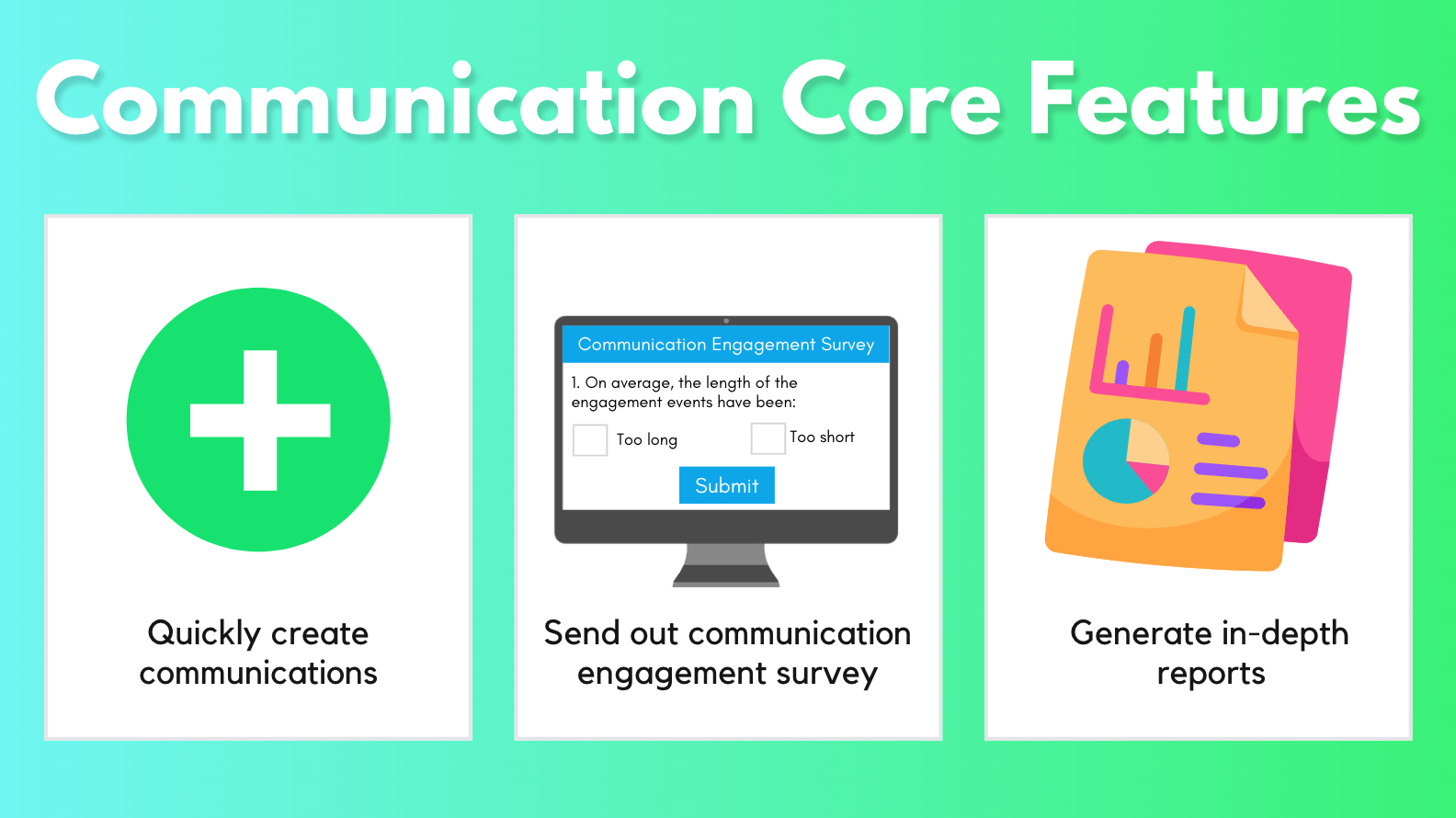
Are you tired of handling difficult external communication plans in Excel? Then check out OCMS Portal. This All-in-one OCM solution includes the Communications Tool for seamless and comprehensive external communication planning, among other tools to ensure your change management success. Sign up for free today (no credit card required).
External Communication: What It Aims to Achieve
The purpose of external communication varies based on the content and objectives of the message. It can be categorized into several key purposes:
- Awareness: External communication is crucial for informing people about new information related to the organization, such as product price changes or alterations in business processes. This helps prevent issues like customer complaints due to lack of awareness.
- Sales & Lead Generation: External communication is frequently used to drive sales and generate leads. This includes advertisements, sale notifications, website content, and email newsletters designed to attract and engage potential customers.
- Customer Service: External communication plays a vital role in addressing customer inquiries, providing support, resolving issues, and keeping customers informed about their orders. It contributes to maintaining good customer relationships.
- Shareholder & Press Releases: Public companies utilize external communication, particularly press releases, to keep shareholders informed about company activities. Non-public companies also issue press releases to announce significant developments like new products or expansion plans.
- Project Related: When company projects impact external stakeholders such as vendors, distributors, or customers, strategic external communication is essential to prepare these groups for the changes and potential impacts.
These are the primary purposes of external communication, and organizations may employ various communication methods based on their specific needs and mission.
Distinguishing Internal and External Business Communication
Internal and external business communication serve distinct purposes:
- Internal business communication is messaging within the organization, serving purposes like change management, HR communication, and updates.
- External business communication is directed outside the organization, serving functions such as sales, marketing, customer service, and shareholder updates.
Internal communication focuses on internal operations and employees, while external communication engages external stakeholders to achieve business objectives.
Building a Strategy for External Communication
Successful external communication relies on this structured approach, ensuring that messages reach the right audiences and achieve the desired results.
It’s vital to track and measure the success of each communication channel to optimize future campaigns and avoid budget wastage.
Here is a checklist that outlines the process of creating and managing an effective external communication strategy:
- Define External Communication Purpose: Clearly establish the objectives and intended outcomes of the external communication campaign.
- Identify Audiences: Identify the specific external groups or individuals that need to receive the communication, considering their unique needs and preferences.
- Refine Audience Messaging: Tailor the messages for each audience group to ensure that the content is relevant and engaging.
- Determine Communication Channels: Select the most suitable communication channels based on the target audiences and past successful strategies, ensuring a mix of different channels.
- Define Success Metrics: Set measurable goals and key performance indicators (KPIs) to gauge the success of the campaign, such as sales targets or webinar sign-ups.
- Use Communication Tools: Utilize a centralized platform or software to plan, schedule, and manage the communication efforts efficiently, allowing real-time access and collaboration for team members.
The OCMS Portal change management provides provides support for metric success scoring on communication campaigns. Use the built in communication metrics or customize your own. Try all of this for free today (no credit card needed).
Launching Your External Business Communication Plan
The final step in implanting an external business communication plan is “deployment” and in this phase you should:
- Track the timing of each message sent.
- Review predetermined success metrics.
- Generate comprehensive reports on the campaign’s performance.
- Utilize cloud-based tools for efficient campaign management.
- Continuous monitoring and tracking during the campaign.
- Optimize the strategy based on real-time reporting.
- Essential for a successful external communication strategy that achieves its goals.
Detailed Deep Dive
Everything You Need to Know on How to Create & Track an Effective External Communication Plan
There are many different reasons that companies need to communicate with those outside their organization. They may need to send out shareholder updates, or a new customer portal may be on the horizon that customers need to be aware of.
Other types of external communication from a company include run-of-the-mill billing and invoicing activities, and marketing campaigns to drive consumer interest and sales.
While the purpose of external communication types can differ, the overall external communication meaning remains the same, which is the need to get a message to someone outside an organization.

The Importance of External Communication Campaigns.
How these various external corporate communications are handled, can have a major impact on how companies operate and their profitability. For example, if they aren’t tracking the success of each of their forms of external communication marketing, then they can waste money on ineffective lead generation efforts.
If shareholder communications aren’t sent out in a timely manner and on a specific schedule, the company can receive compliance penalties.
In this article, we’ll answer, “What is external communication?” as well as explore the benefits of external communication and keeping your campaigns managed and tracked. You’ll also find a step-by-step guide and brand communication plan example to help you with creating your own external communication strategy.
Table of Contents: External Communications Guide
Keep on scrolling down this page to read each section or click any link below to go directly to that section.
1. External Communication Definition
2. What Is External Communication to an Organization?
3. What’s the Purpose of External Communication?
4. OCMS Portal External Communication Examples: Template with Real-Time Analytics
5. What’s the Difference Between Internal & External Business Communication?
a. What Is Internal Communication for a Business?
b. What Is External Communication for a Business?
6. External Communication Channels
7. Step-by-Step Checklist: Putting Together an External Communication Strategy
a. Define External Communication Purpose
b. Identify Audiences for the External Corporate Communication Campaign
c. Refine Audience Messaging for the External Organizational Communication
d. Determine the External Channels of Communication
e. Define External Communication Success Metrics
f. Add Your External Communication Plan & Schedule into a Tool or Software
g. Deploy External Business Communication Plan | Track, Report, Optimize
8. OCMS Portal Internal & External Communications Toolkit with External Communication Examples
9. Conclusion – External Communications | Guide for External Comms Campaigns
10. FAQ: What Is External Communication?
Do you have any questions about the importance of external communication in an organization or about this guide? Please, reach out and let us know.
External Communication Definition
External communication is the process of communicating to external audience groups, that can might include customers, clients, organizations, vendors, or any 3rd party that is not part of the organization sending the communication.
Let’s deep dive into the external communication meaning, which is really quite straightforward. No matter how many channels of external communication your organization may use, they will all fall under this general external communication definition.
If we look at each word separately on Oxford Languages in Google, we find:
- External is defined as “a source outside the subject affected.”
- Communication is defined as “the imparting or exchanging of information or news.”
So, you put those together, and for an organization, the external communication definition would be the exchanging or sending of information to entities outside the organization.
Is there a best external communication strategy that you have used that you would like to share with other project managers and change leads? Please, reach out and let us know.
What Is External Communication to an Organization?
Another way to express external communication meaning is that it encompasses anything – email, social media posts, announcements, webinars, etc. – provided to people or organizations not employed by or a part of your company.
External communication for an organization can include anything from Google advertising to an informational email to external stakeholders to an announcement about a price increase to customers.
Without effectively communicating events and information, problems occur that can negatively impact a company’s bottom line.
So, external corporate communications and doing them well improve overall operational efficiency and campaign or project success.
Do you need a place to track and manage all types of external communication? Try OCMS Portal today for free (no credit card needed) and experience the Communications Management Tool.
What’s the Purpose of External Communication?
The purpose and uses of external communication depends on the content of the message and what it is intended to do. You can break down some common uses of external communication into the categories and purposes below.
Awareness
The importance of external communication for awareness is seen when a customer complains because they didn’t know of a new price for a product or process change in how they do business with a company.
Awareness communications are to let people know information that’s new to them about your organization.
Sales & Lead Generation
One of the most common uses of external communication is to generate sales and leads. These eternal comms come in the form of ads, sale notices, and more. Websites and email newsletters also fall into this category.
Customer Service
These types of external communication will include answering questions for those asking about your products or services. It also includes things like issue resolution and keeping customers up to date on their orders.
Shareholder & Press Releases
Public companies must use different forms of external communication to keep shareholders updated. One of these is a press release about various activities happening within the company. Non-public companies also issue press releases to announce things like a new product or expansion plans.
Project Related
When a company project is impacting external groups, such as vendors, distributors, or customers, several external channels of communication need to be planned to provide messaging about those impacts to prepare these groups for the change.
These are some of the most common external communication types, and there are many others depending upon the organization, its needs, and its mission.
Don’t miss: External Communication Definition. Let us know if you have any feedback or questions about our communication management toolkit referenced in this guide.
What’s the Difference Between Internal & External Business Communication?
When creating a brand communication plan example or a customer communication plan example, messaging campaigns are typically separated into two main segments. These are internal and external.
What Is Internal Communication for a Business?
An internal communication campaign includes communications that are sent inside the company to employees or departments. This is all messaging within your organization.
Uses of Internal Communication:
- Change management for internal groups being impacted by a project
- Human resources messaging
- Updates via an internal company newsletter or messaging channel
- Process and policy updates
- Employee onboarding and training
- Status updates and reports
- And many more…
What Is External Communication for a Business?
As we noted above in the external communication definition, external communication is messaging directed to those outside an organization.
Uses of External Communication:
- Change management for external groups being impacted by a project
- Sales & marketing
- Awareness of company news
- Shareholder updates
- Customer service
- And many more…
Do you have any questions about the channels of external communication? Please reach out and let us know.
OCMS Portal External Communication Examples: Template with Real-Time Analytics
Drive more effective external business communication campaigns with easy-to-use, flexible communication software.
Try the OCMS Portal External Comms Management Tool today. Sign up for a free trial.
Continue reading for a more detailed overview of external communication strategy and external communication examples.
► Tool & Checklist Template to Manage Your External Communications
Do you have any questions about the importance of external communication in an organization? Please reach out and let us know.
External Communication Channels
The benefits of external communication include ensuring that projects run smoothly, that customers are well taken care of, and that leads continue coming in the door, to name just a few. The most effective external communication strategies use a combination of ways to get the message out.
Often, different external communication channels can have different results with different audiences. For example, if you are trying to sell a product to Millennials and Gen Z, then social media can be one of the most effective channels of external communication.
However, if you need to make customers aware of a change in how you invoice them, social media would not be nearly as effective. Instead, you would want to use one of the more personal forms of external communication, such as a personalized email or phone call.
According to Statista, some of the most used channels of external communication that customers like (in order of preference) are:
- Phone
- Social media
- Website
- Text
- Messaging apps
It’s important to track the external communication types being used so you can gauge which one is most effective for the audience and the type of communication you are sending out.
From an informational email to external stakeholders to an expensive digital marketing campaign, it’s vital to know what works and what doesn’t.
What is external communication all about? What are the types of external communication? If these are the types of questions you’re asking or have other questions related to external communication please reach out and let us know.
Customer Communication Plan Example Analytics from OCMS Portal

Using the analytics dashboard in OCMS Portal’s Internal & External Communications Tool, you can easily identify problems with certain channels of external communication and pivot quickly to improve your campaigns.
The importance of external communication in an organization for driving project awareness, sales, service, and more means not getting stuck on any particular external corporate communications channel, and instead, exploring as many as possible.
Here are examples of several different external communication channels you might want to consider, depending on the campaign and audience:
- Company blog
- Direct mail
- Social media posts
- Facebook messenger
- In-person meeting
- Social media influencers
- Live web event
- Newsletter
- Pay-per-click ads
- SMS/text
Don’t miss: “How to Create a Communication Plan,” which includes tips on both internal and external corporate communication.
Let us know if you have any feedback or questions about our communication management toolkit, uses of external communication, or the importance of external communication to projects.
Step-by-Step Checklist: Putting Together an External Communication Strategy
Now, we’ll go over a step-by-step checklist for external organizational communication planning and tracking. Without structure in place for external comms, companies can run into problems with many external communication examples, including not notifying external groups of important information or not notifying them in a way that they will actually see and respond to.
Poor communication leads to poor outcomes in everything from customer service and sales to the adoption of a new project initiative. The benefits of external communication are only realized when you have good planning, management, and a tracking process in place.
Customer Communication Plan Example from OCMS Portal’s Comms Management Toolkit
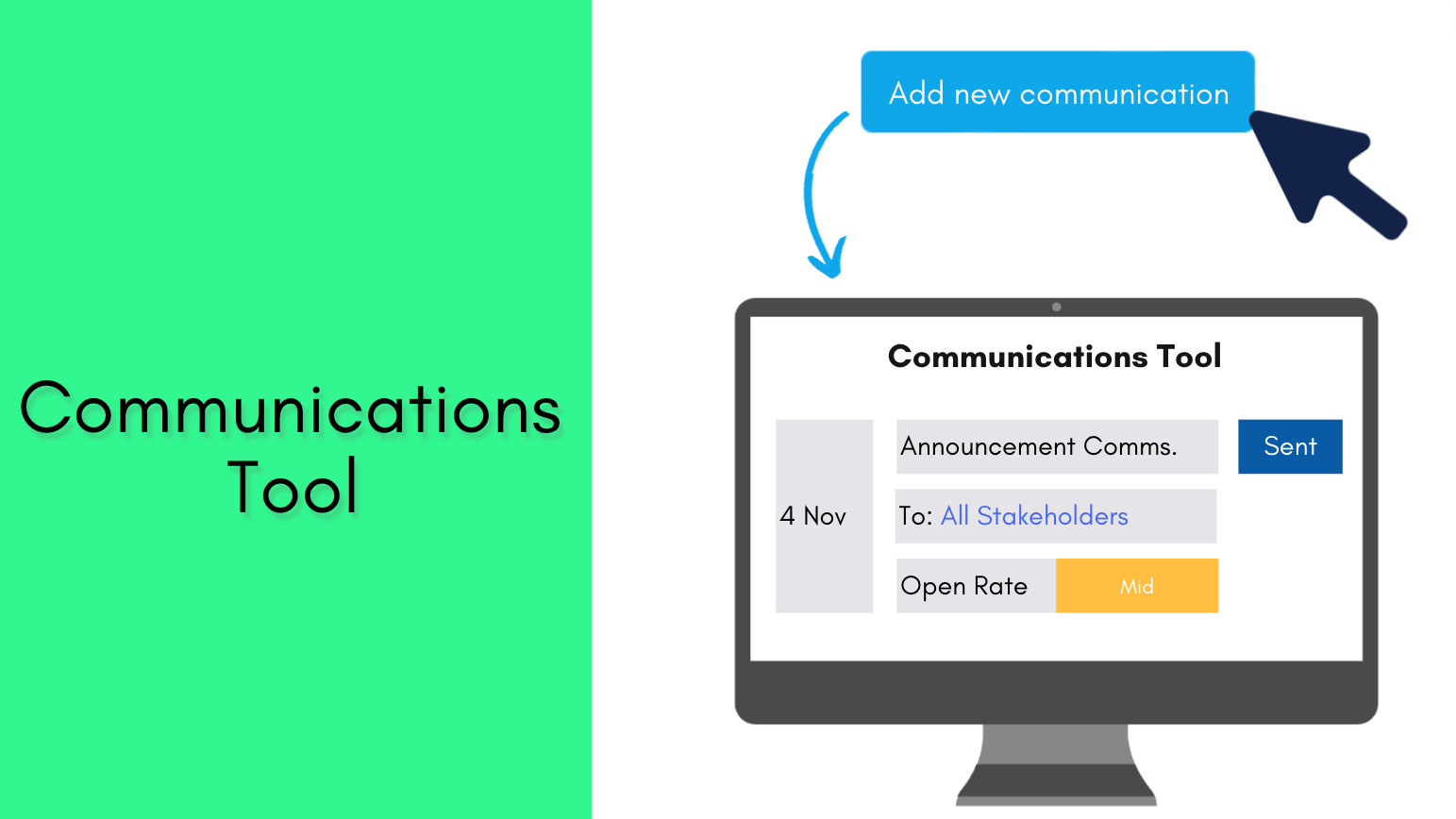
The template above from the OCMS Portal Communications Management Tool illustrates the importance of external communication planning.
Following is a brand communication plan example that can be used for all types of external communication. You can use these steps below as well as the external communication examples described above to create a communication plan for any external audience campaign.
Use this step-by-step external communication plan for an informational email to external stakeholders, awareness and messaging for a project being supported by change management, marketing or sales external communication types, and much more.
Define External Communication Purpose
Before you can begin planning external comms to groups, you need to answer the question, “What is external communication meant to do in this case?”
If you are tasked with creating external communication strategies for various departments, it’s important to ask lots of questions upfront to identify what they want this communication campaign to do.
Knowing the purpose and definition of “success” for an external communication strategy is vital for taking the next steps effectively.
Identify Audiences for the External Corporate Communication Campaign
Once you know the purpose of the external corporate communication, you will next identify the audience or audiences that will be sent the external communications for this campaign.
For example, if your company will be shut down for a week for team-building events, then you may have several audiences whom this news needs to be communicated to in different ways. Such as vendors, customers, and affiliates.
If your external communication strategy is dedicated to marketing and sales, then there may be various external target audiences you need to identify and assess so you send the right messaging to the right audience.
Refine Audience Messaging for the External Organizational Communication
The importance of external communication messaging can’t be stressed enough. You need to understand your target audiences so you can speak to them effectively when putting together external business communication campaigns.
Your next step in this external comms plan is to look at the external communication meaning for each audience group. Refine the message to speak to each one. In most cases, you won’t want to send the same exact message to vastly different external audiences.
Determine the External Channels of Communication
Now that you know more about your audiences and have refined your messaging for them, you will want to identify the best external communication channels.
It’s best practice to use a mix of different channels, to ensure you get the benefits of external communication reach that you’re looking for to achieve the goals for the campaign.
Be sure to review past external communication strategies to see which channels may have worked best for the identified audiences.
Define External Communication Success Metrics
Before you begin sending out the messages you have planned for the external communications strategy, you should identify metrics for success. Are you trying to get a certain number of sales from an email blast? Do you want your vendors to click a link to sign up for a webinar about a new process?
You won’t be able to track the success of your different channels and different types of external communication if you haven’t first identified how to measure that success. Plus, have a place to measure it.
This is an important step that many miss when executing external communication strategies. Not tracking success metrics can lead to wasted budget dollars from ineffective communication campaigns.
Add Your External Communication Plan & Schedule into a Tool or Software
Keeping your external corporate communications planning in sticky notes or various spreadsheets and Word documents spread out across different devices is a recipe for disaster.
It’s best to have everything in a single place that can be accessed by all team members. Cloud-based interfaces are the best for this, as all team members handling external communications can share the same information and everything is kept updated in real-time.
Think about using a tool like the OCMS Portal platform, which gives you the flexibility of customization as well as Excel and PowerPoint export capabilities and automated analytics reporting.
For this step, you will enter all your external communication plan details into the tool of your choice and then add in details like start, end, and sent dates and progress stage for each message.
Having all the external business communication messages in your tool or online spreadsheet will allow you to better track and troubleshoot as your campaigns are deployed.
External Communication Examples: How to Define Metrics for Your External Comms
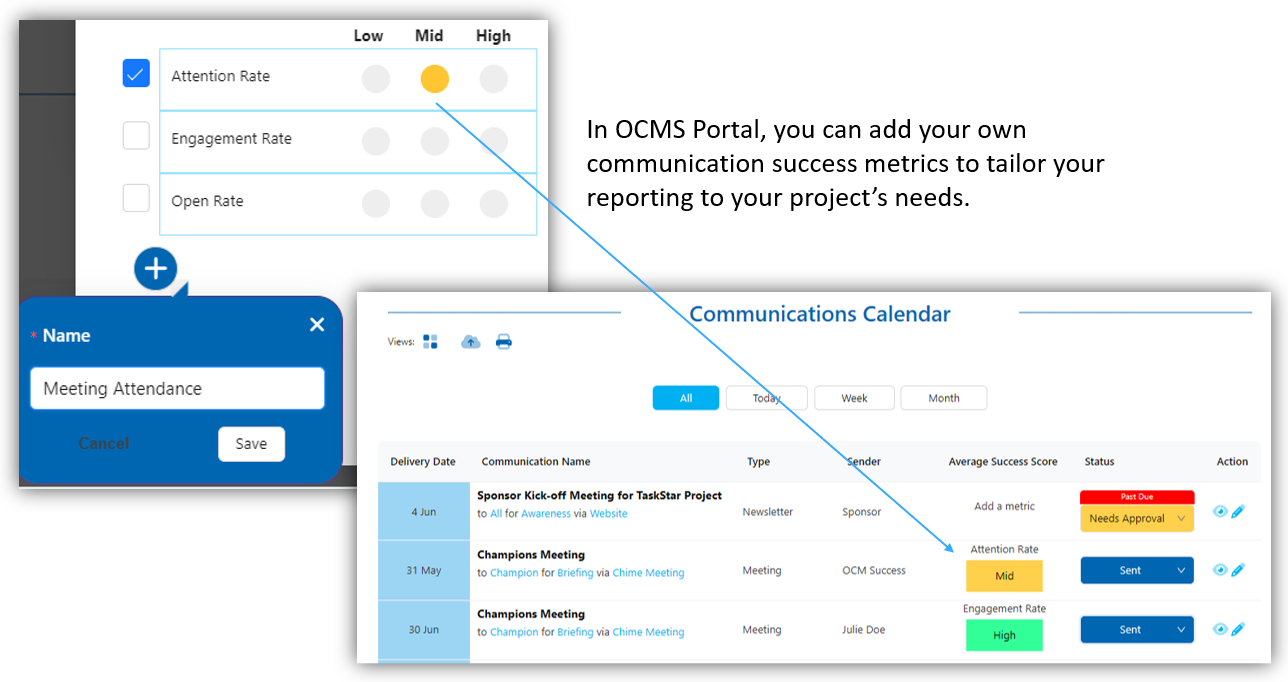
Illustrated above are some of the uses of external communication metrics and measurements of success, as illustrated in the sample data included in the OCMS Portal Communication Management Software.
Deploy External Business Communication Plan | Track, Report, Optimize
Your final step is deploying your external communications strategy. As part of your deployment, you should track when each message is sent, review the success metrics that were determined, and then report on the campaign.
If you have followed the earlier steps, like using a cloud-based tool to input and manage your external organization communication campaign, and defined success metrics, then you’ll be in a better position to adjust as needed.
Monitoring and tracking as the campaign is going out and optimizing based on the reporting are key to a successful external communication strategy that meets its goals.
Is there a best brand communication plan example that you have used that you would like to share with other project managers and change leads? Please, reach out and let us know.
OCMS Portal Internal & External Communications Toolkit with External Communication Examples
Would you like to learn more about the OCMS Portal Communications & Messaging Toolkit described on this page?
Sign up today for a free trial and get access to the all-in-one internal and external communication planning tool along with all of the free resources that includes communications templates and examples.
Simplify and Optimize Your External Communications Today!
► ► Top Ranked Communication Planning & Mgt Tool
Do you have any questions about the external communication definition on this page or the importance of external communication in an organization, or how to approach it? Please reach out and let us know.
Conclusion – External Communications | Guide for External Comms Campaigns
External organizational communication covers multiple facets of how a company interfaces with customers, vendors, distributors, shareholders, affiliates, contractors, and other outside groups.
No matter what types of external communication are being sent, it’s important to use a structured and organized process for managing and tracking these external messaging campaigns.
We hope that this guide on the uses of external communication and how to approach a communication strategy for external audiences has been helpful to you.
Please don’t hesitate to reach out if you have any questions or something you’d like to see us add to make this guide even better.
FAQ: What Is External Communication?
What is internal and external communication?
Internal and external corporate communication refers to any type of information shared with or sent out to various groups, either inside or outside an organization.
Internal communications would be to employees, departments/business units, and other groups that are a part of an organization.
External communications would be to customers, leads, vendors, and other external groups.
Why is external communication important?
There are many reasons that companies need to communicate with those outside their organization. Clear and timely external communications are important for ensuring the company interfaces efficiently with outside groups.
Is social media external communication?
Social media is one form of external communication. It’s an increasingly important one because of the amount of time people spend on various social media channels, like Facebook, Twitter, Instagram, TikTok, and others.
What are external communication strategies?
External communication strategies consist of identifying a purpose for, choosing the audience and messaging, and then sending out one or more types of external communication to achieve the intended purpose or goals.
Note: Content on OCM Solution's ocmsolution.com website is protected by copyright. Should you have any questions or comments regarding this OCM Solutions page, please reach out to Ogbe Airiodion (Change Management Lead) or the OCM Solutions Team today. OCM Solution was previously known as Airiodion Global Services (AGS).
External image sources:
- stock.adobe.com
- https://www.ls.graphics/free/free-pixel-4-and-pixelbook-go-mockup



